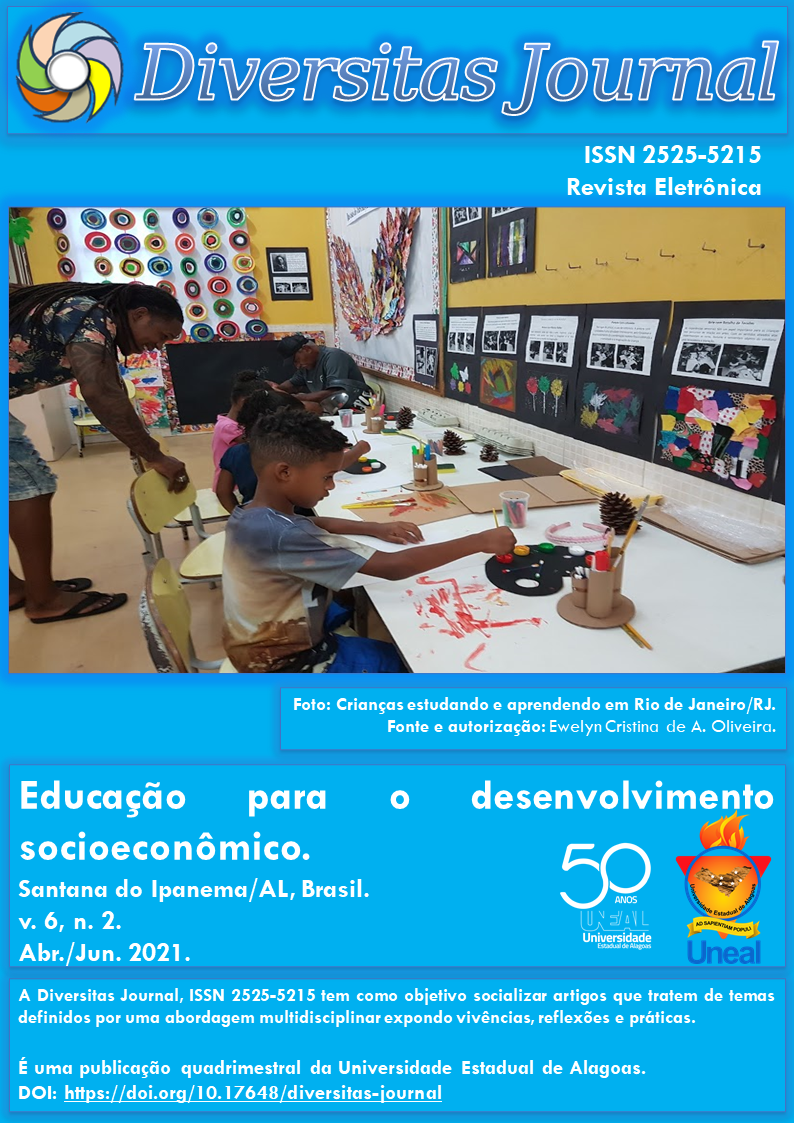Como é a estrutura e a diversidade alpha e beta de matas de galeria inundáveis?
DOI:
https://doi.org/10.17648/diversitas-journal-v6i2-1496Abstract
ABSTRACT: In this work, a phytosociological survey was carried out in flooded gallery forests with the aim of evaluating the floristic composition, similarity and relationship of the community's distribution with the environmental variables. Alpha diversity was assessed by calculating the Shannon - Wienner index (H ') and the Pielou equity index (J'). Beta diversity between stretches of forest was verified by calculating the Sorensen similarity index - “Bray-Curtis”. To relate the community to the environmental variables, soil samples were collected for chemical and physical analysis, soil moisture and shading data in the plots by the Braun-blanquet method. To verify the correlation between species distribution and environmental and spatial variables, the Canonical Redundancy Analysis (RDA) was performed. The species that had the most importance was Richeria grandis Vahl. The Shannon-Weiner index (H ') ranged from 2.47 to 2.84 nats.ind-1, correlated with low ecological dominance (high Pielou equability (J'): 0.88 to 0.81). The Bray-Curtis index showed low floristic similarity, high beta diversity. Analysis of the RDA revealed that variations in vegetation were poorly explained (14%) by the environment and space. The large unexplained proportion (86%) reinforces the idea that stochastic patterns, advocated by the Neutral Theory, may prevail over environmental ones in the structuring of these gallery forests.
KEYWORDS: Multivariate analysis, forest islands, ecological conservation, Serra do Espinhaço.
Metrics
Downloads
Published
How to Cite
Issue
Section
License
Copyright (c) 2021 CRISTIANE COELHO DE MOURA, Thaís Ribeiro Costa, Paula Alves Oliveira, Darliana da Costa Fonseca, Evandro Luiz Mendonça Machado

This work is licensed under a Creative Commons Attribution 4.0 International License.
The Diversitas Journal expresses that the articles are the sole responsibility of the Authors, who are familiar with Brazilian and international legislation.
Articles are peer-reviewed and care should be taken to warn of the possible incidence of plagiarism. However, plagiarism is an indisputable action by the authors.
The violation of copyright is a crime, provided for in article 184 of the Brazilian Penal Code: “Art. 184 Violating copyright and related rights: Penalty - detention, from 3 (three) months to 1 (one) year, or fine. § 1 If the violation consists of total or partial reproduction, for the purpose of direct or indirect profit, by any means or process, of intellectual work, interpretation, performance or phonogram, without the express authorization of the author, the performer, the producer , as the case may be, or whoever represents them: Penalty - imprisonment, from 2 (two) to 4 (four) years, and a fine. ”


















